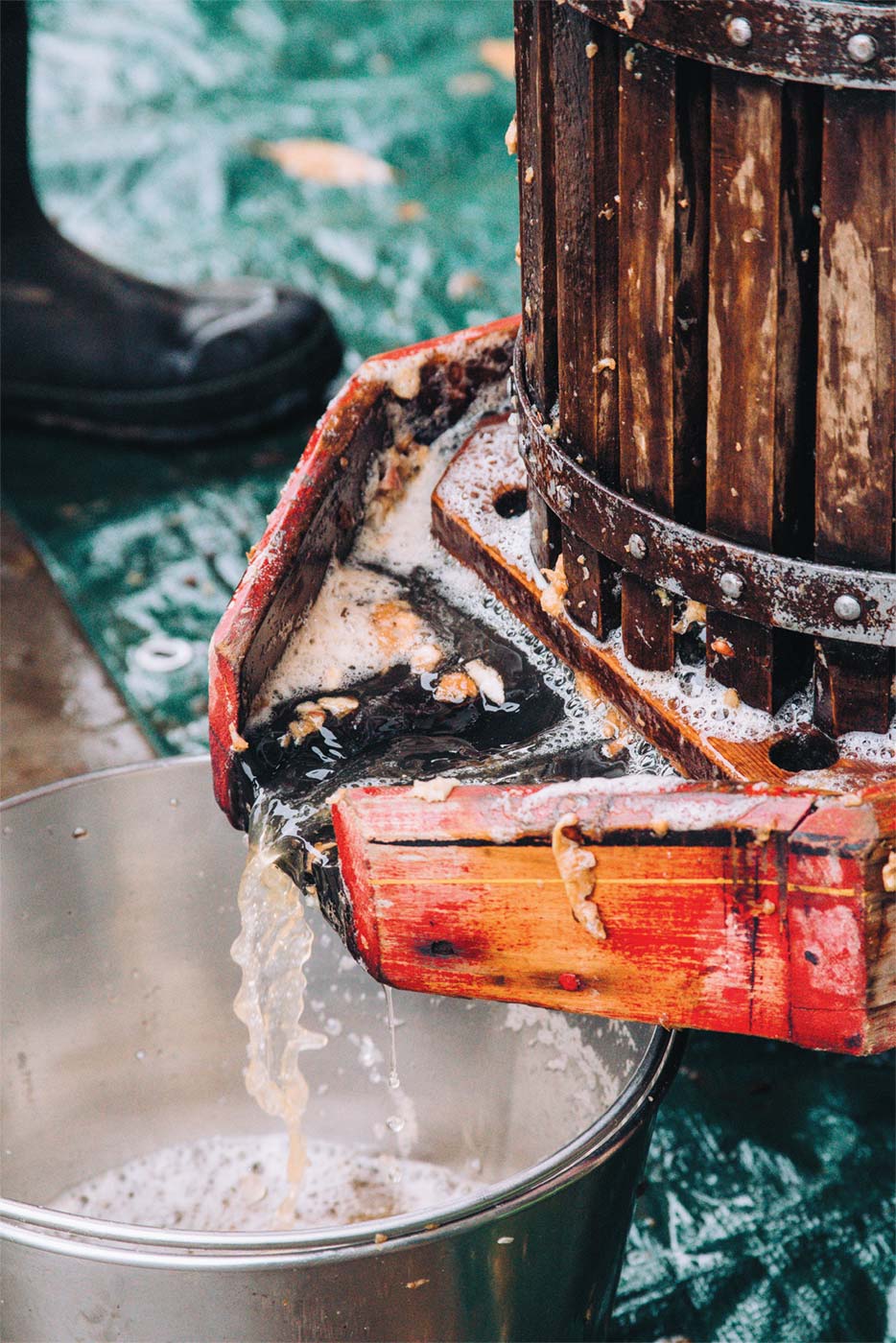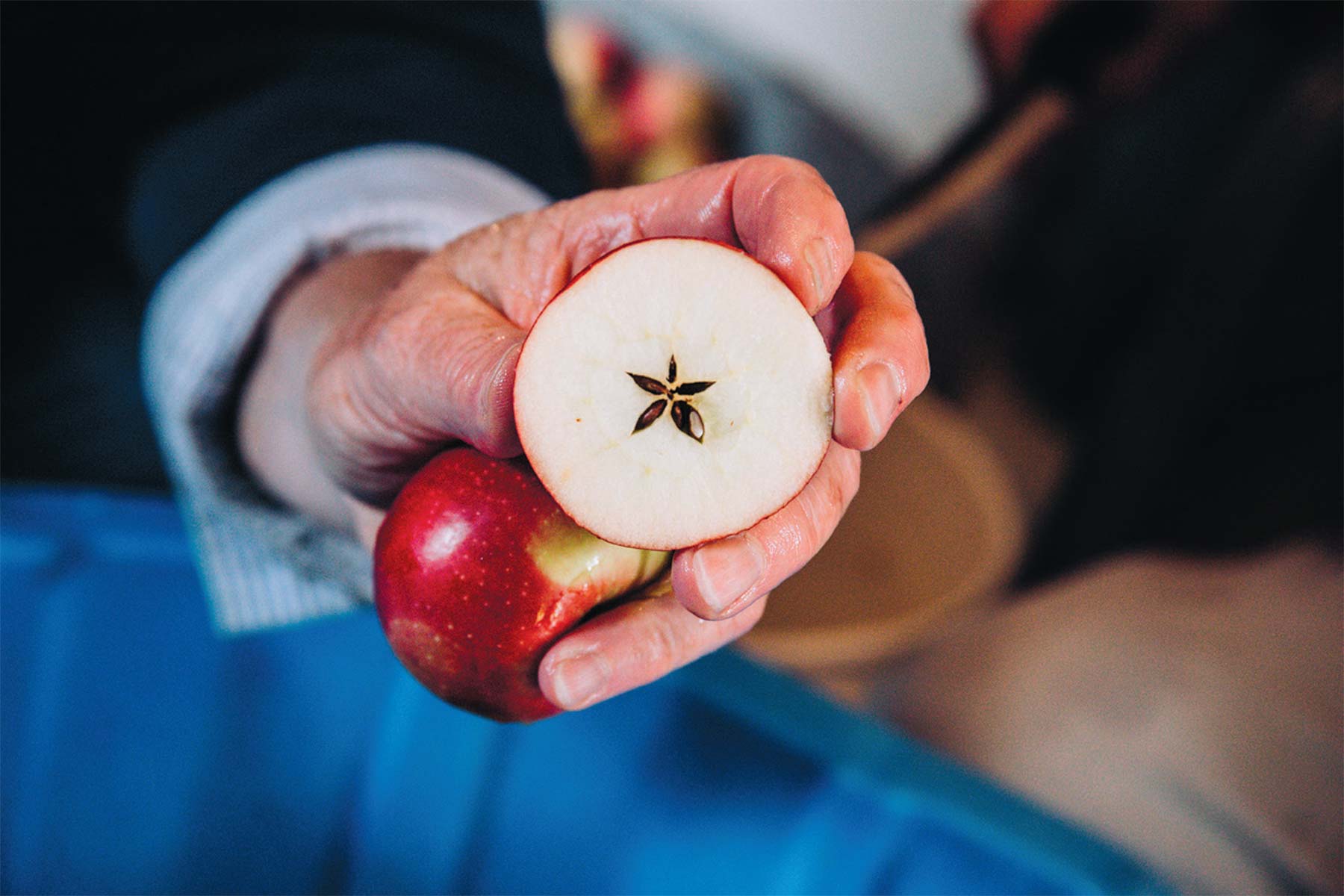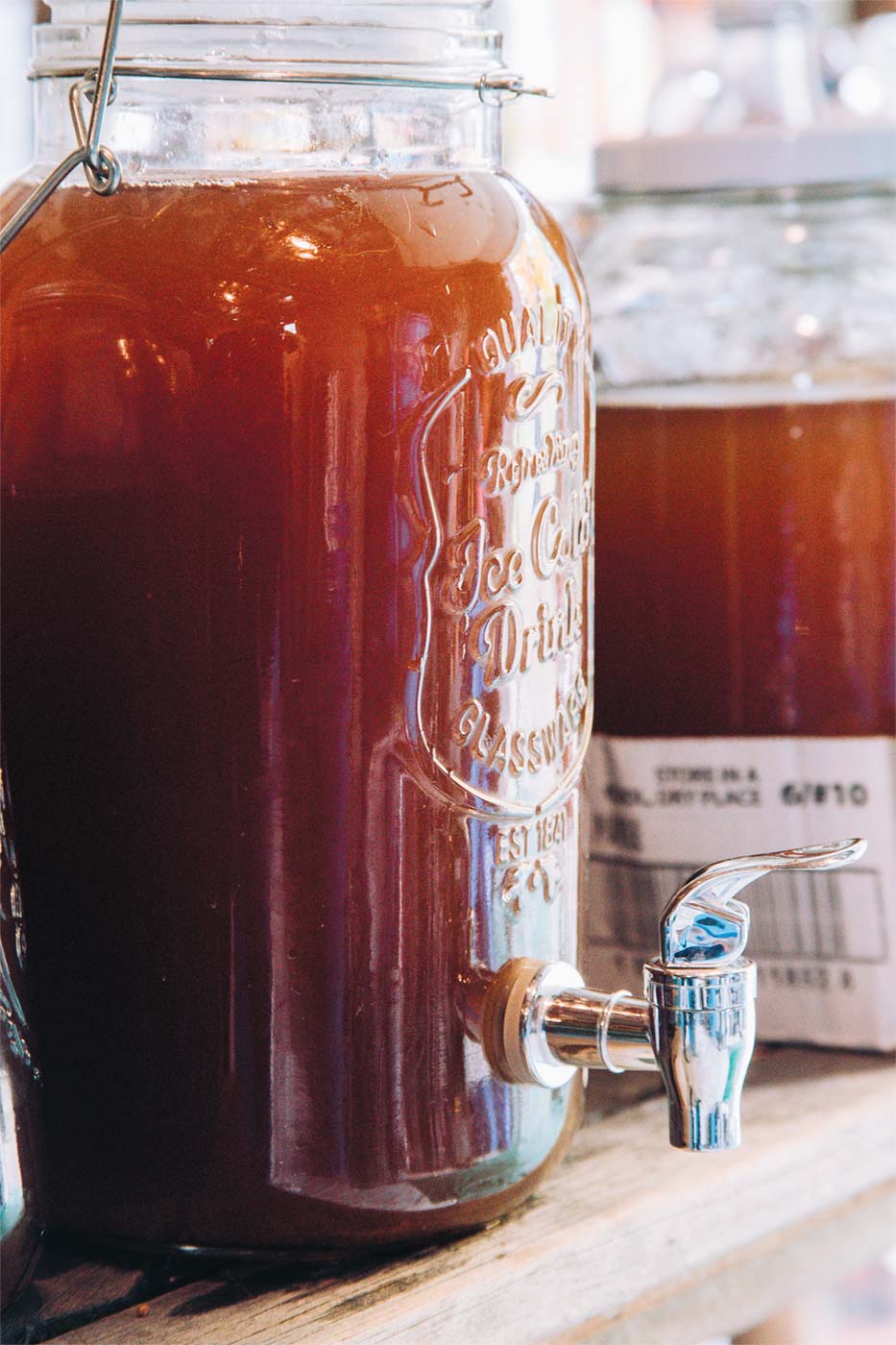SARA GILMAN
The Gathering
FEATURES
As for many who live and work on the land, the seasonal demands of agriculture create rituals to be anticipated. And for the Alder ranch family of the Gilman IH Cattle Company, autumn is a favorite. After a hot, dry summer, the fall wind blows in shorter days and brilliant leaves. A sense of both urgency and reward build as the harvest comes to an end after the year’s labors. Hay is put up, cows go to sale. And the apples ripen: red, green, yellow, tart, sweet, delicious.
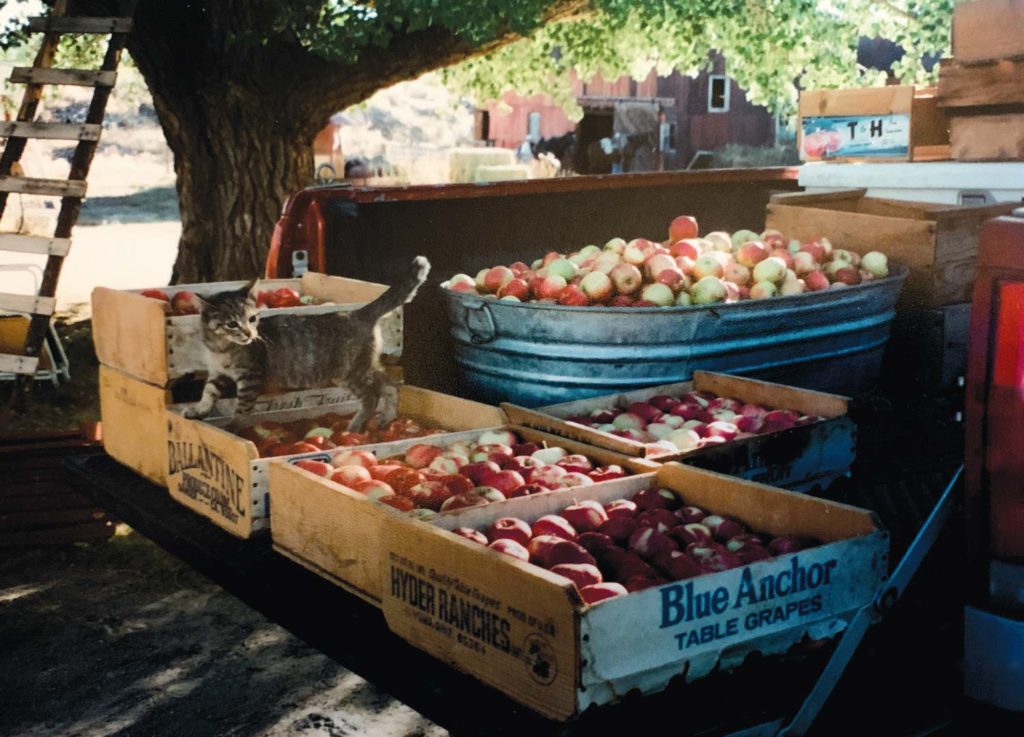
Les Gilman, now the family’s patriarch, presses apples in 1996 with his father, son, and aunt. Memories of picking apples in the family’s heirloom orchard are fond. Every fall they would pick a truckload of apples for pressing. (These historic photos are courtesy of Les Gilman.)

Les Gilman assesses the harvest in his heirloom apple orchard. Many apple trees on his Gilman IH Ranch are remnants of an orchard planted before 1909, when the family purchased the property. Cider pressing has long had a tradition of multigenerational participation at the ranch. Everyone helps out in some way.
The ranch is home to many heirloom apple trees, some dating back to an orchard over 110 years old when the ranch was purchased by the family in 1909. At that time gold was being dredged, and many relics of that mining era can still be found on the family’s seventh-generation ranch, including an old iron-and-wood cider press. This contraption has been used for over a century to squeeze cider from these same trees still standing today. The family’s patriarch, Les Gilman, 66, reminisces about using this press as a child and the annual tradition of gathering apples, leaving the orchard with a truckload of boxes.
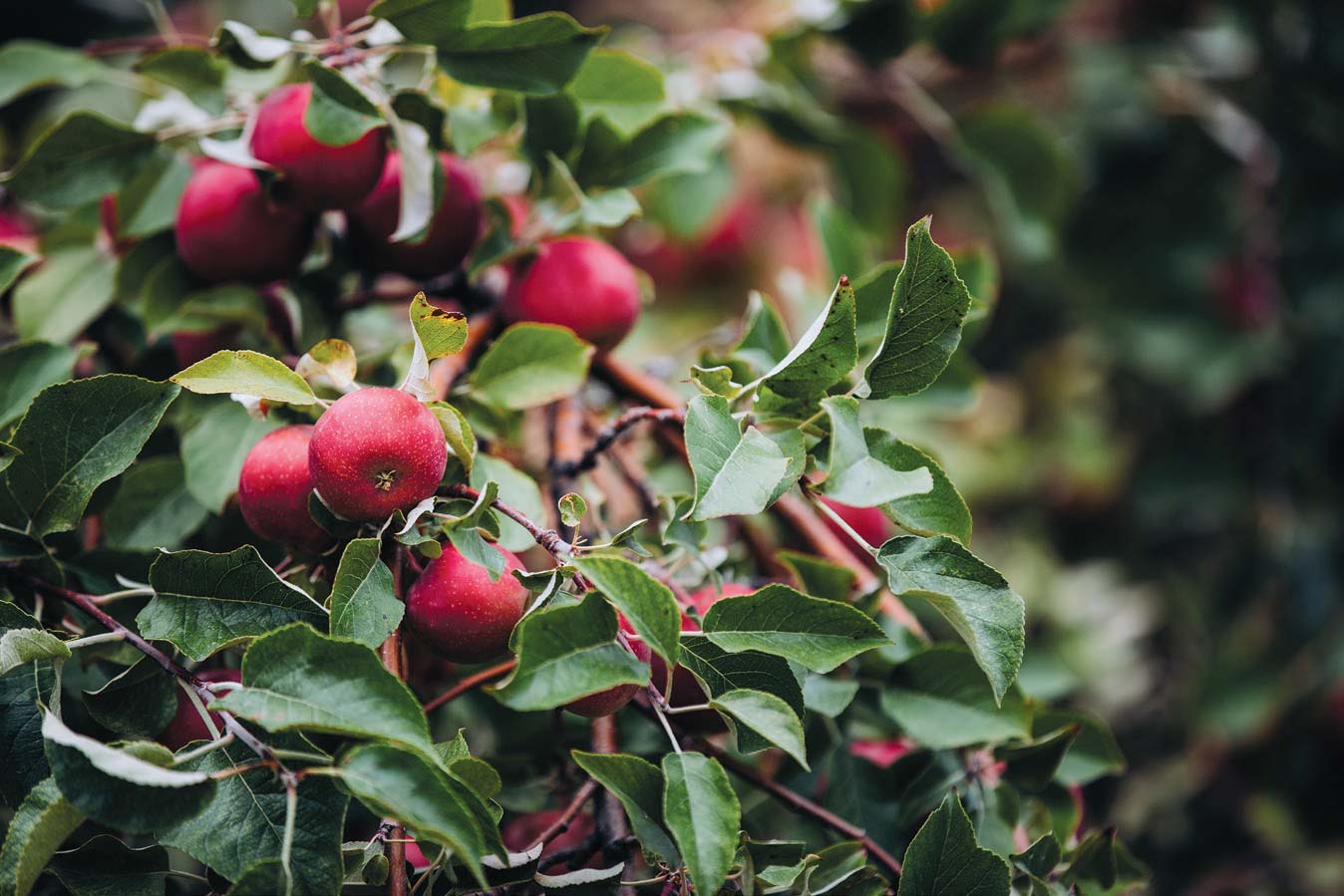
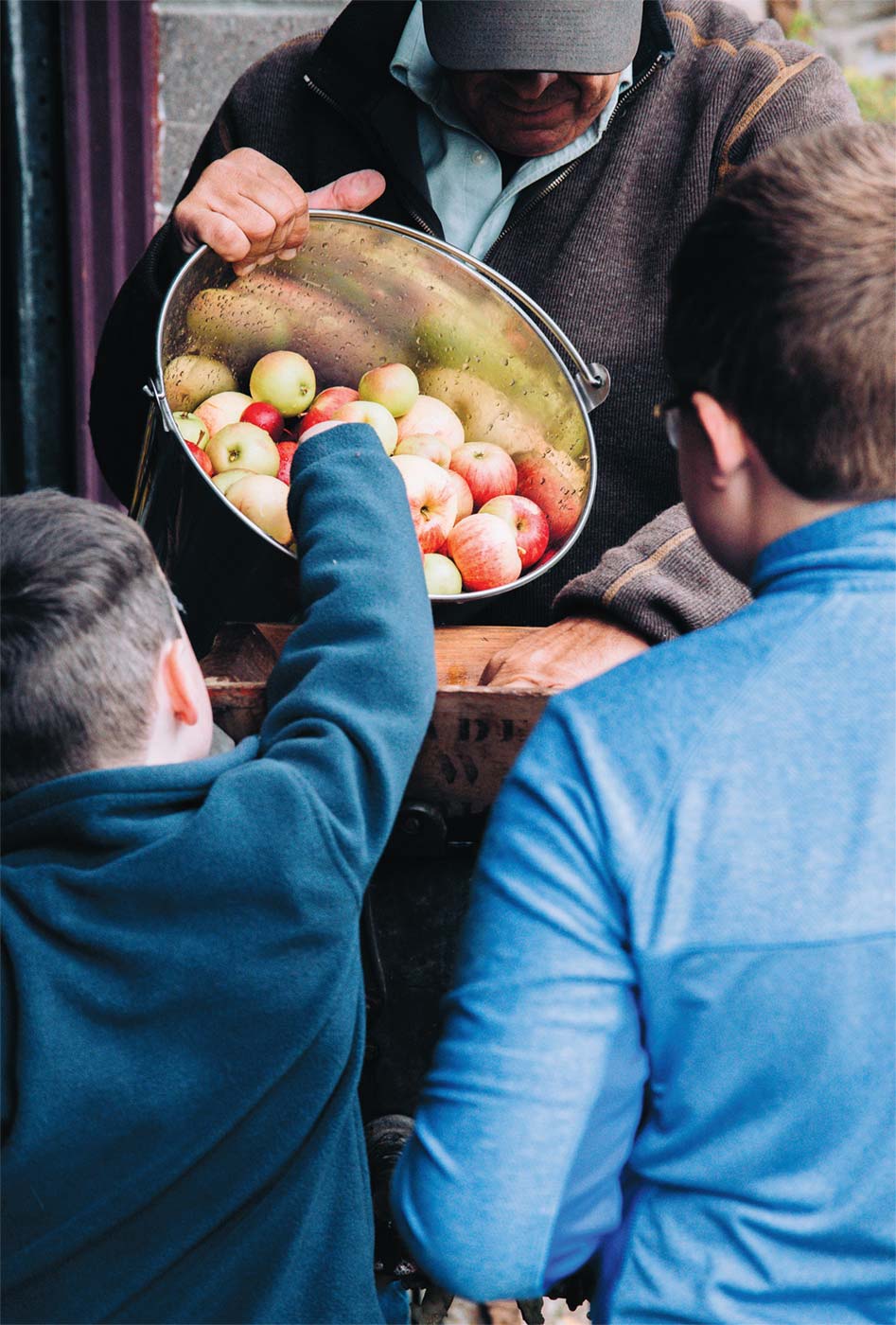
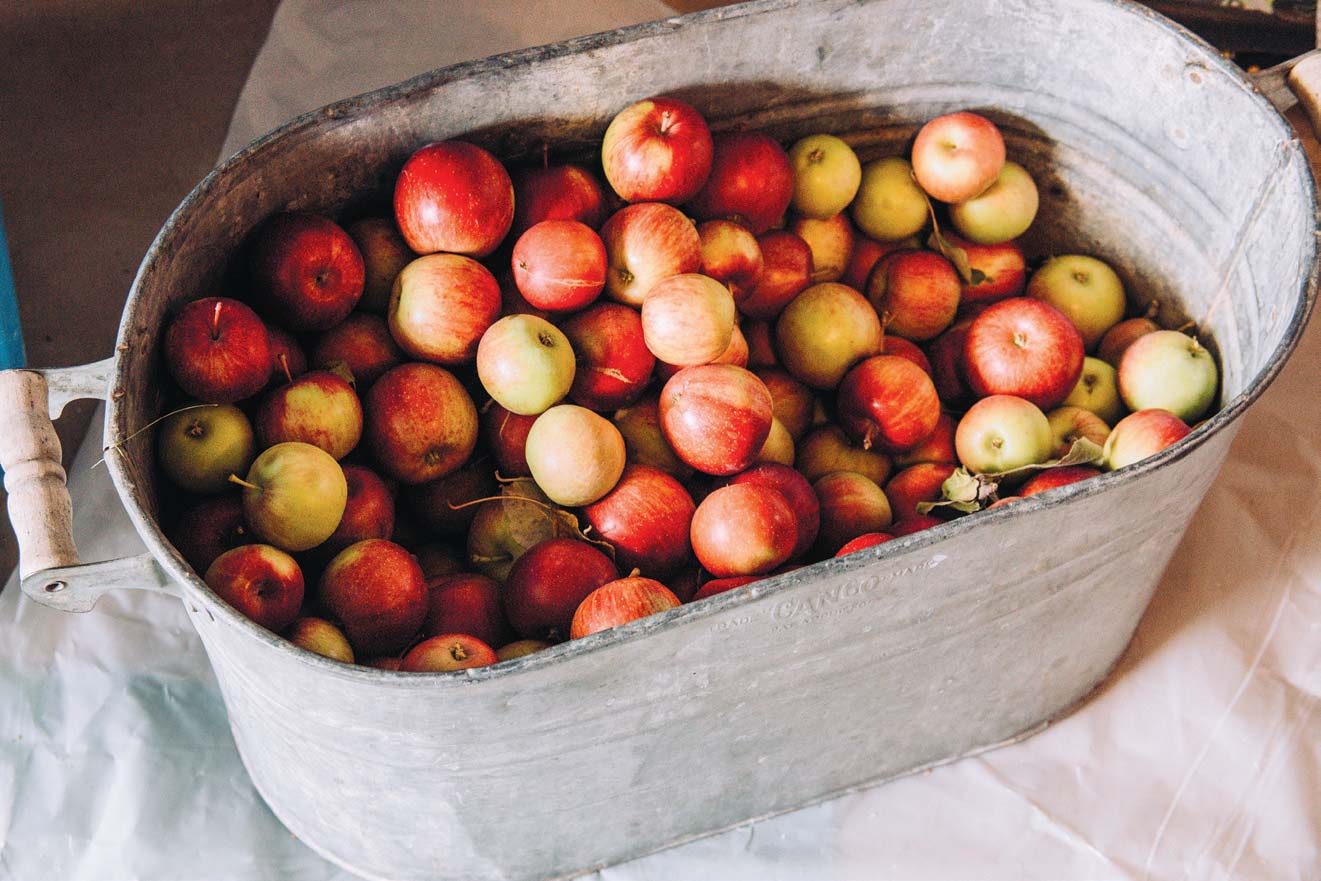
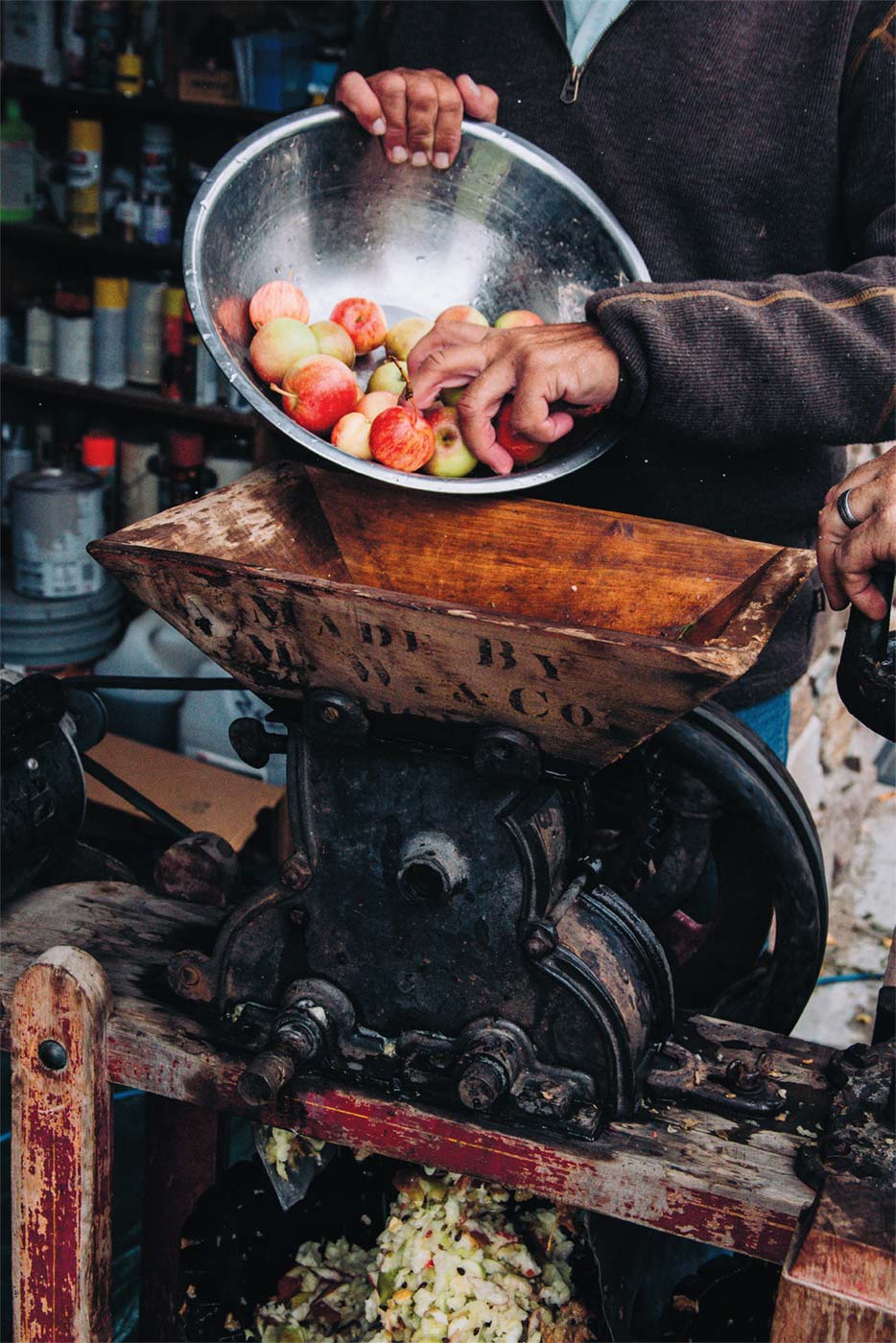
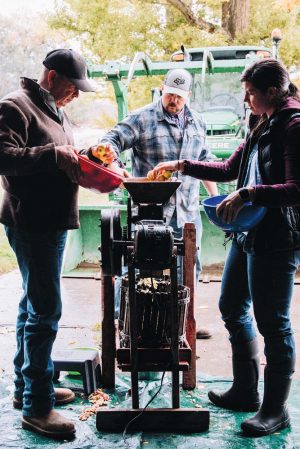
Apples soak in tubs of water before pressing. All apples are used; nothing is ever wasted. Windfalls (dropped apples), bruised, and bug- or bird-nibbled fruit are simply trimmed and tossed in the hopper, where they are chopped and dropped into a wooden basket set below. Originally a hand-turned mechanism, this press had a motor installed in the 1960s to speed up the process.
Opposite: After pressing the apples, the plate needs to be cleaned of loose mash. Through the years, this press has been mended after use. To keep the cider from dripping through the bottom, wax is applied to the base each year to seal it.
“I can remember as a child feeling a sense of awe and danger impressed upon us,” he says. This press, originally a handturned mechanism, was rigged with a motor in the 1960s by his father, which allowed them to move through the process more quickly. Gilman remembers sitting around tubs of bobbing apples with family, washing, and cutting out bruises and blemishes. Everything was used in some way.
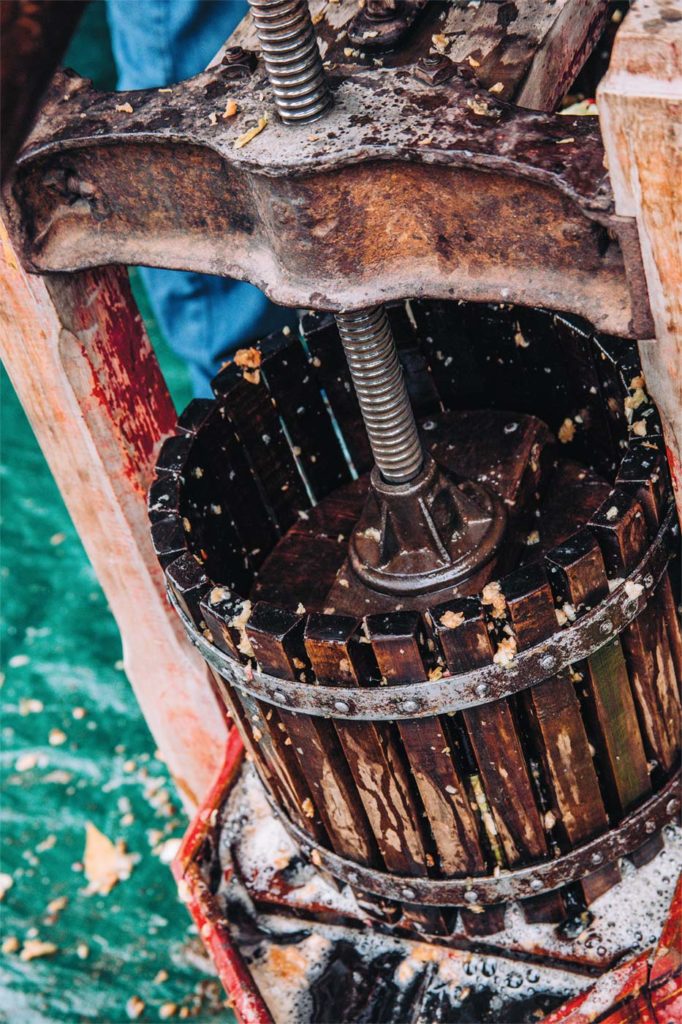
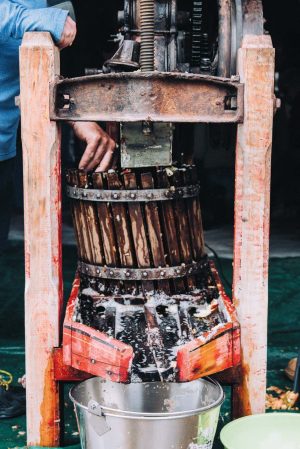
There is nothing quite like sipping fresh-squeezed cider straight from the press. A true seasonal delight, fresh cider is now frozen and stored for later. Historically, cider was canned to keep for months on shelves, often lasting until the next summer without going hard.
Now, surrounded by three generations of ranching family and a whole lot of laughter and chatter, one can imagine the same movements and busy hands, the same hum—swift and easy—as a century before. A festive ritual of seasons connecting past to present, a cup held to the spout, sipping cider straight from the press.
